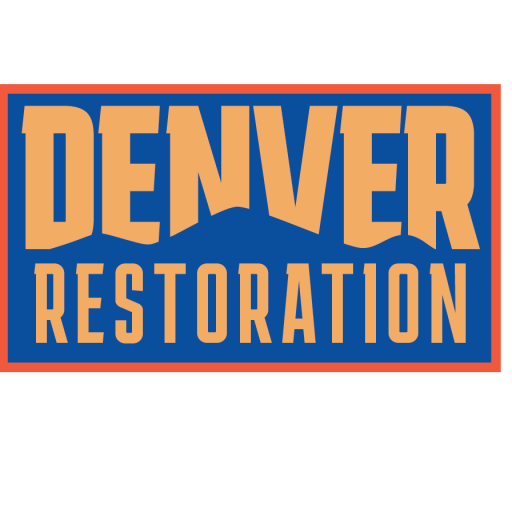The Value of Quick Disaster Response
Every homeowner dreads the thought of a disaster striking their property – be it a natural disaster like a flood or a fire outbreak. When such catastrophes occur, the immediate response and mitigation measures decide the extent of damage and the possibility of an efficient recovery. That’s where quick emergency teams come in. They are the front-line warriors, whose importance cannot be overstressed.
Quick Emergency Teams and Swift Response Times
When disaster strikes, every second matters. The longer an emergency is left unattended, the higher the risk of intensifying property damage and endangering life. This is where the nimbleness of quick emergency teams is a lifesaver.
– They Minimize Structural Damage: The complex nature of water and fire damage requires swift action to prevent the situation from worsening. Experienced teams are well-versed in techniques to halt the spread of water, fire, or smoke.
– They Prioritize Safety: Quick response teams are well-trained in maintaining safety in hazardous conditions. Bystanders and victims’ safety is a high priority while mitigating disaster.
– They Manage Secondary Problems: If not addressed promptly, minor issues can turn into significant problems. Quick response prevents issues such as mold growth or structural instability, which can cause long-term damage.
Appreciating Disaster Response: More than Just a Clean-Up
Acknowledging the role of these professionals goes beyond appreciating disaster response for its primary role: clean-up. Their role is multi-faceted, combining technical expertise with empathy and a keen understanding of customer communication. Disaster response teams are often the first to comfort and reassure victims, reminding us all of our resilience in the face of adversity.
Quick emergency teams’ holistic approach helps victims begin the process of recovery, ensuring a smoother transition back to a semblance of normalcy. This is perhaps why their work is often met with overwhelming gratitude.
Restoring Mind and Property: The Double-edged Effect of Disaster Response
Often, the journey to recovery after a disaster can seem overwhelming. This is where the role of smoke damage restoration and water damage clean-up is crucial. In addition to cleaning and restoring property, these teams help restore victims’ peace of mind.
Their expertise in disaster management ensures minimal damage and optimal repair, delivering a sense of security that is essential in such situations. As a homeowner, knowing your property is in capable hands means one less thing to worry about during a challenging time.
Gratitude: An Emotional Response Warranted by their Heroic Work
During these challenging times, recognizing and appreciating disaster response teams for their tireless efforts is one way communities express their gratitude. The work of these quick emergency teams often goes unnoticed until disaster strikes close to home.
Their timely intervention not only saves property but also upholds the spirit of resilience and unity within the community. They remind us that even in the face of disaster, there is always help at hand, warranting our sincerest appreciation and gratitude.
Thus, as we navigate the aftermath of such incidents, our gratitude towards these first responders shows the strength of our community spirit and the human capacity to overcome even the harshest adversities.
Deconstructing the Complexities of Disaster Management
Climate change is leading to more frequent and intense disasters year over year. Whether it’s fires, flash floods, or hurricanes, we rely heavily on disaster management teams to prevent, respond to, and recover from these catastrophic events.
Disaster management is a complex field, involving a multitude of tasks like early warning dissemination, damage assessment, and immediate response. The expertise these teams bring to the table is invaluable and can mean the difference between recovery and disaster.
Disaster Assessment: A Critical First Step
The initial phase immediately after a disaster strikes is the assessment stage. This is where disaster teams evaluate the scale and impact of the disaster. Depending on the situation, they’ll establish a plan of action.
– They determine the type and extent of damage.
– They consider whether people have been displaced and if there are threats to public health.
– They make an inventory of available resources, including personnel, equipment, and funds for the response and recovery process.
– They recognize potential secondary hazards resulting from the disaster, such as asbestos exposure, mold growth, or structural instability.
Mitigation Measures: Stopping Further Damage
The next step after disaster assessment is mitigation – the process of reducing the possibility of further damage. Disaster response teams help mitigate secondary damage by:
– Identifying and responding to potential health and safety risks.
– Utilizing specialized restoration techniques and equipment to prevent additional property damage.
– Coordinating with local authorities to design and implement effective response strategies.
Fire and smoke damage restoration services are an example of mitigation works that are significantly beneficial in the aftermath of a fire.
Recovery and Restoration: The Path to Normalcy
Recovery and restoration form the core of disaster response. The aim here is not only to restore physical conditions but also to rebuild the emotional and social fabric of affected communities. This involves:
– Cleaning up the aftermath, such as debris removal and water extraction.
– Undertaking repair works, like fixing damaged structures, replacing damaged materials, and restoring essential services.
– Providing support and resources to restore normal living conditions.
The role of water damage restoration services cannot be understated in such situations, ensuring not just property restoration but also preventing potential health hazards like mold growth.
Environmental and Health Safety: A Primary Concern
While disaster management teams work tirelessly to restore physical conditions, they also prioritize environmental and health safety. Teams follow strict protocols to ensure:
– Environmental factors are considered in decision-making, minimizing the ecological impact.
– Proper waste management and disposal are maintained, preventing disease-ridden pests and contamination of water sources.
– Air quality is monitored to reduce the risk of respiratory issues and allergies.
Insurance and Legal Compliance: An Added Layer of Protection
Insurance and legal compliance are other critical aspects of disaster response. Teams ensure activities are compliant with local laws and regulations, and insurance claims are filed correctly, speeding up the compensation process for victims.
They provide crucial documentation, like photos of damage, inventory lists, and accurate cost estimates. This helps victims recover from financial loss and provides a framework for potential legal proceedings.
Lasting Impressions: The Aftermath of a Disaster
The aftermath of a disaster can be a daunting and scary time. However, it’s also a time for communities to come together, support each other, and rebuild. It’s the efforts of quick emergency response teams that make this rebuilding possible. They form the backbone of our society’s resilience, facing adversity head-on and providing a beacon of hope in challenging times.
Above all, the value of quick disaster response lies not just in what they do, but also in the impact they have – providing comfort and hope, restoring normalcy, and fostering resilience in the face of adversity.
Embracing the Future: Be Prepared, Stay Safe
Disasters are a harsh reality of life, but with a robust response framework and the relentless efforts of disaster response teams, we can navigate these challenges and emerge stronger. Preparation is key; awareness and readiness can drastically reduce the destruction caused by these calamities. So, let’s arm ourselves with knowledge, have an emergency plan in place, and stand together when disaster strikes. After all, it’s unity and resilience that make our communities unstoppable.

